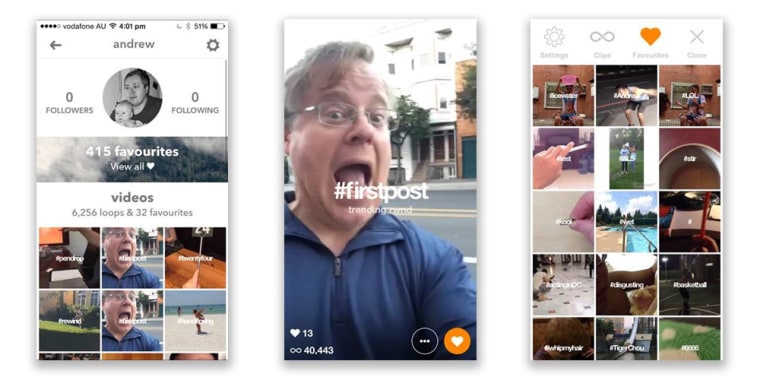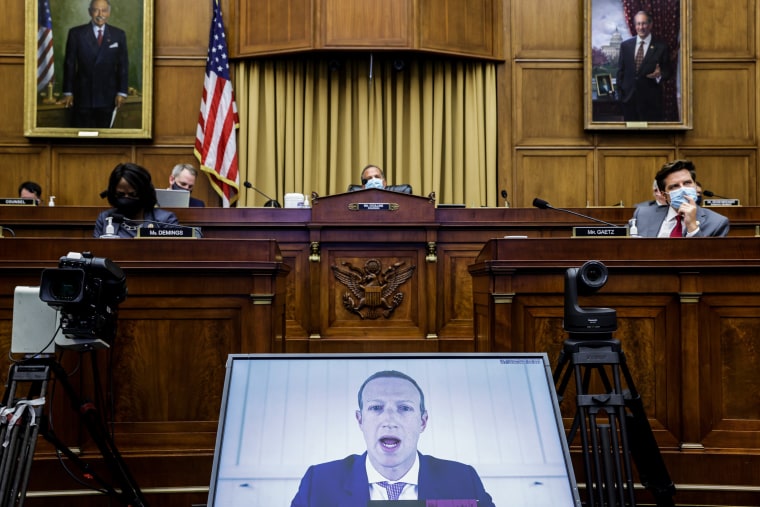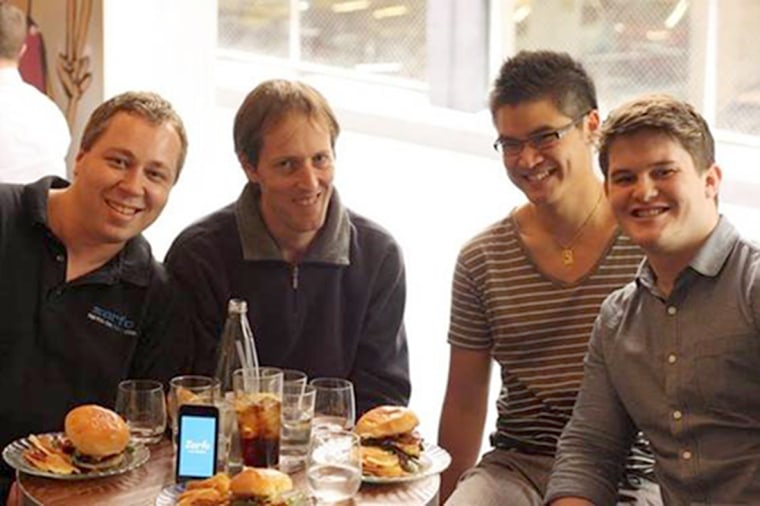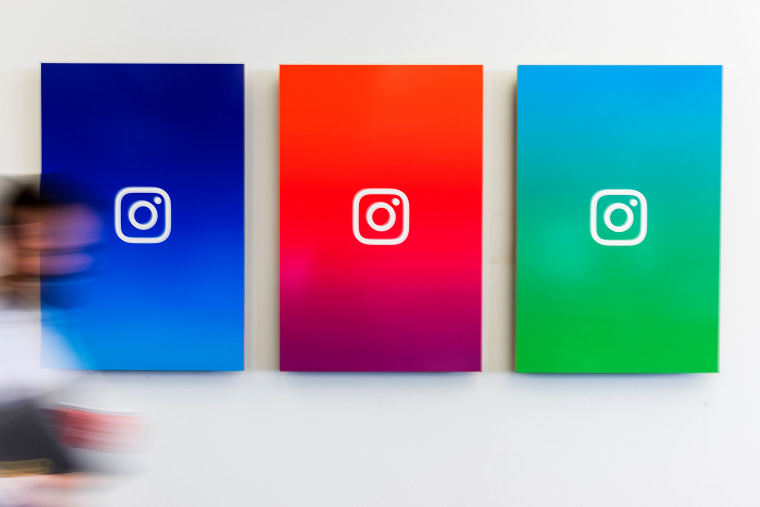Back in 2014, Andrew Cunningham thought he and some colleagues had a hit with a smartphone app to create short bursts of reversible video.
These days, if Cunningham wants to use his old app, it might be easier to pull up Instagram. The Facebook-owned photo-sharing app has an almost identical feature called Boomerang, which people use to create videos of streams running backward or friends doing backflips in reverse.
Cunningham has long suspected that Instagram copied Boomerang from his startup, which after all was based in Australia, home of the original boomerang hunting tool. His app, called RWND, didn’t last long after Boomerang came on the scene in 2015, a year after RWND.
“You wake up one day and the magic that you’ve got has been baked into another product,” said Cunningham, who’s based in Melbourne.
It was all ancient history in the fast-moving world of tech startups until last month. From the other side of the planet, Cunningham watched as members of a House antitrust subcommittee pressed Facebook CEO Mark Zuckerberg over his alleged swiping of ideas, confronting him with emails in which his employees discussed how “copying is faster than innovating.”
Now Cunningham said he’s ready to join the fight, signing up as a new recruit in an escalating war over whether Big Tech has too much power.

Through a friend Cunningham has been reaching out to House members to share his story and find out whether any of the Facebook emails that congressional investigators have obtained mention Boomerang or his app. He said he’s also speaking with lawyers about a possible lawsuit.
“It bodes well for us to be able to reopen the conversation,” he said of the House inquiry. “We’d like to get to the bottom of this and get an understanding of what has happened.”
Cunningham has no direct evidence that Instagram copied his app. It’s the circumstances that bother him: the similar functionality, the past examples of alleged copying by Instagram and RWND beating Boomerang to market by more than a year.
Then there's the logo. Boomerang used the mathematical symbol for infinity — the same logo as RWND.
Cunningham’s experience is an example of a new willingness among small competitors to speak out about industry practices now that lawmakers are listening. For more than a year the House antitrust subcommittee led by Rep. David Cicilline, D-R.I. has been investigating the tech sector, including allegations of stifling innovation.
Last week, another video app founder, Sam Mueller, accused Facebook of stealing his idea after he shared it thinking Facebook wanted to acquire his startup. “Pro tip: don’t present your hard work at their developer conferences,” Mueller said in a tweet thread that was reshared more than 14,000 times.
“This should be a warning that founders must tread carefully, especially when the current environment is so brazen,” Mueller added in a direct message.
Facebook declined to comment on the origins of Boomerang, Cunningham’s suspicions or what they could mean for ongoing investigations. The company did not immediately respond to a request for comment on Mueller’s allegation of copying.

Instagram and Facebook are regularly criticized for launching features that others debuted first. Just last week, Instagram introduced Reels, a video tool similar to the popular app TikTok, drawing a charge of “plagiarism” from TikTok’s owner.
Cunningham did not apply for a patent of the RWND technology because he said his startup didn’t have the money to do so, possibly limiting his claim.
“I can believe Instagram was strongly influenced by it. ‘Stealing’ is hard to prove for sure,” said Robert Scoble, who writes a popular tech blog and was among RWND’s users years ago.
It may be that other apps helped to inspire Boomerang. When Boomerang launched in October 2015, TechCrunch reported that it was “suspiciously similar” to another upstart named Phhhoto, also now defunct.
Thomas Dimson, a former director of engineering at Instagram, said in an email that the main author of Boomerang was Tim Lenardo, a former Instagram software engineer. Lenardo says on his LinkedIn page that he built Boomerang during a hackathon. He did not respond to requests for comment.
But even if Cunningham doesn’t get anything for his claim, small software developers like him may still pose a threat to large tech companies. They may be able to persuade enforcement agencies like the Justice Department to bring cases related to monopolization, or they may be able to persuade lawmakers to introduce legislation to crack down on practices that muscle startups out of business.
“If we start doing this too much to the startups in our community, they may not survive. And that brings into question where the innovation is going to come from,” Cunningham said.
U.S. law is favorable to large companies such as Facebook. Antitrust enforcers generally judge their actions based on the impact to consumers, especially as measured through prices. Low prices are usually taken as a sign of a healthy competitive process, regardless of what happens to smaller competitors. Harm to innovation is taken into account to a lesser degree.
Zuckerberg, in last month’s congressional hearing, said in response to questions about copying that his company’s focus is responding to consumer demand.
“I view it as our job to understand what people are finding valuable in all of the services that they use,” Zuckerberg told Rep. Pramila Jayapal, D-Wash. “We’ve certainly adapted features that others have led in, as have others copied and adapted features that we’ve led in.”
In interviews, Cunningham and colleagues from his old Melbourne startup spoke about how they created RWND as an eight-person team over a hectic six weeks in 2014, before video had become the cultural force on social media that it is now.
They brought an early version out to a local pub. “Everyone we showed it to was just laughing and stealing our phones, trying to create RWNDs,” Cunningham said. “I thought, this is interesting. I’ve never had a product before that people were this eager to use.”
RWND launched in September 2014 to some positive reviews, and its timing was fortuitous: The ALS ice bucket challenge had just piqued people’s interest in sharing online videos.

James Hunt, one of the engineers who worked on it, said it was popular because it had a simple design that allowed easy sharing: People could download the videos to their phones and share them anywhere, including on Instagram.
“We had the idea: everyone loves GIFs, but no one can make their own very easily,” he said.
The team, though, didn’t have a lot of funding for marketing, and they said venture capitalists in Australia were hesitant to back them. When Boomerang came out the next year, Instagram’s huge footprint meant that investor interest in RWND disappeared. The team ran out of money and went their separate ways.
Jason Nunnelley, an Alabama-based project manager on the team, said he’s conflicted about the experience. On the one hand, he said, imitation is inherent in all business, and it’s smart. “Car companies do this. ‘We’re losing customers to SUVs. Let’s make SUVs,’” he said.
But he also said there’s something “not sportsmanlike” about swiping others’ ideas as often and as blatantly as he said Facebook seems to. “You put their logo next to our logo. I don’t know, man, it looks very similar,” he said.
